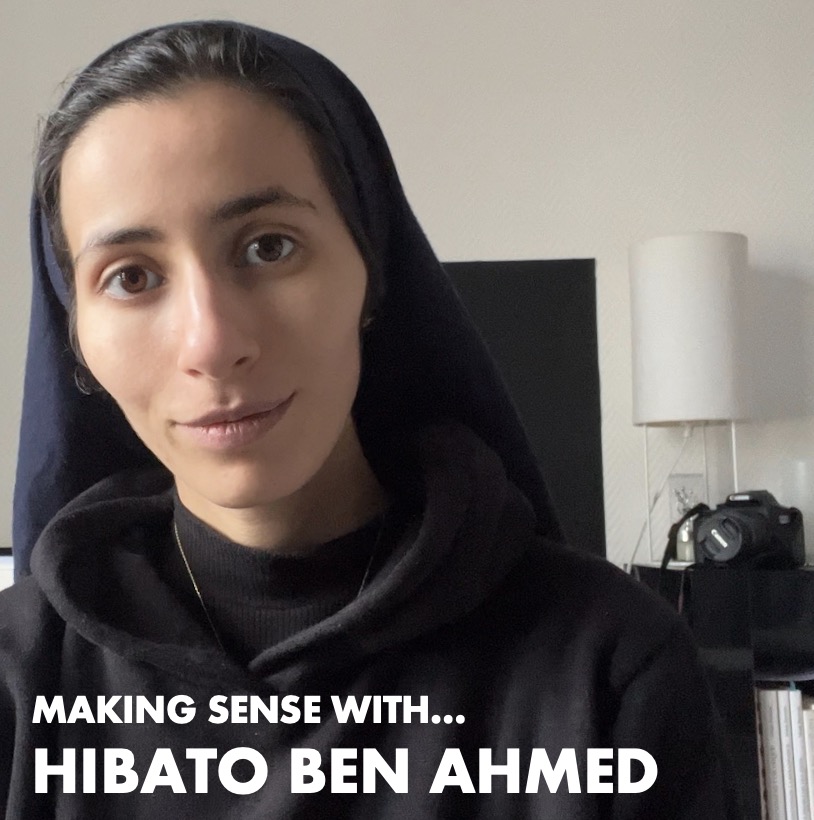Photo courtesy of Hibato Ben Ahmed
What makes a semiotician tick? SEMIOVOX’s Josh Glenn has invited his fellow practitioners in the field of commercial semiotics, from around the world, to answer a few revealing questions.
Limoges (France)…
SEMIOVOX
When you were a child/teen, how did your future fascination with symbols, cultural patterns, interpreting “texts,” and getting beneath the surface of daily life manifest itself?
HIBATO BEN AHMED
I have always had a passion for reading and cinema, but during my adolescence I really started to devour stories. I read so many novels and watched so many movies, from various genres and countries… and this got me thinking about my favorite stories. What did they share in common? Beneath their surface level, I began to understand, my favorite novels and movies had certain fundamental structures and themes in common. Though consciously I wasn’t seeking out these structures and themes, unconsciously my heart and mind resonated with these stories’ deeper meaning.
SEMIOVOX
Describe your first encounter(s) with the theory and practice of semiotics.
HIBATO BEN AHMED
I was lucky! Born and raised here in Limoges, which is home to The Research Centre for Semiotics (CeReS) at the Université de Limoges, my love for language and interest in the mechanics of story telling led me to the Linguistics program at the university. I was destined to be introduced, sooner or later, to semiotics. When it happened, the study of semiotics took my fascination for language and human culture to another level.
SEMIOVOX
How did you find your own way to doing semiotics?
HIBATO BEN AHMED
I work in UX design, a field where my knowledge of semiotics has proven to be invaluable. Would I like to work full-time doing semiotics? Absolutely! But there weren’t many opportunities for professional semioticians when I graduated (in 2019) with a Master’s degree in Sémiotique et Stratégies. And that was before COVID-19 hit, which made things even more difficult. Still, although I don’t work full-time as a commercial semiotician, I deliver semiotic analysis to colleagues and clients when I see the value it can bring to specific projects.
SEMIOVOX
What are the most important attributes of a good semiotician?
HIBATO BEN AHMED
- Inclination towards objectivity. A semiotician should cultivate the ability to let go both of preconceived ideas and of the urgent need to make things make sense immediately.
- Unrestricted curiosity — in everyday life, for all aspects of human culture.
- Flexibility of perspective. A semiotician must think at different levels: zooming in and out, taking a top-down approach and a bottom-up approach, etc.
SEMIOVOX
What three books about semiotics have you found the most useful and enlightening in your own work?
HIBATO BEN AHMED
- Jean-Marie Floch’s Sémiotique, marketing et communication: Sous les signes, les stratégies. A great help in demonstrating how semiotics can be applied.
- Key Terms in Semiotics by [British scholars of literature and literary theory] Bronwen Martin and Felizitas Ringham. To refresh yourself on key concepts, from time to time, this is a good resource.
- Roland Barthes’ Mythologies. One of the most approachable and entertaining introductions to the analysis of cultural elements of all time.
SEMIOVOX
When someone asks you to describe what you do, what is your “elevator pitch”? How do you persuade a skeptical client to take a chance on using this tool?
HIBATO BEN AHMED
I haven’t quite developed the perfect pitch. So I tend to rely on past projects, using them as case studies to show what semiotics can achieve and the value it can provide.
SEMIOVOX
What specific sorts of semiotics-driven projects do you find to be the most enjoyable and rewarding?
HIBATO BEN AHMED
I like building frameworks that empower others in their creative missions. So the projects I find most fulfilling are the ones that help clients and/or colleagues go from “I don’t understand anything about this space! / I have no idea where to start or where to go!” to “Things are so clear now, and I have so many ideas!”
SEMIOVOX
What frustrates you about how semiotics is practiced and/or perceived, right now?
HIBATO BEN AHMED
It frustrates me when semiotics is perceived as utterly subjective. I also dislike it when people reference semiotics as though it were some obscure academic discipline. In fact, semiotics is a helpful analytical tool, one that is approachable, versatile, and which helps remove subjectivity from the strategic decision-making process.
SEMIOVOX
Peirce or Saussure?
HIBATO BEN AHMED
In my studies at the Université de Limoges, we were quite Greimas-focused… so by extension, my bias is for Saussure. I also had a great linguistics professor who painstakingly took us through the Cours de linguistique générale, teaching us only what could be accurately attributed to Saussure. I was sold!
SEMIOVOX
What advice would you give to a young person interested in this sort of work?
HIBATO BEN AHMED
Practice, practice, practice! Theory is essential, of course, but it only gets you so far. To really get semiotics, a mental shift needs to happen — a shift in the way you see and interact with signs. Something needs to be unlocked… which can only happen through practice.
MAKING SENSE series: MARTHA ARANGO (Sweden) | MACIEJ BIEDZIŃSKI (Poland) | BECKS COLLINS (England) | WHITNEY DUNLAP-FOWLER (USA) | IVÁN ISLAS (Mexico) | WILLIAM LIU (China) | SÓNIA MARQUES (Portugal) | CHIRAG MEDIRATTA (India / Canada) | SERDAR PAKTIN (Turkey / England) | MARIA PAPANTHYMOU (Greece / Russia) | XIMENA TOBI (Argentina) | & many more.
Also see these series: COVID CODES | SEMIO OBJECTS | MAKING SENSE | COLOR CODEX


